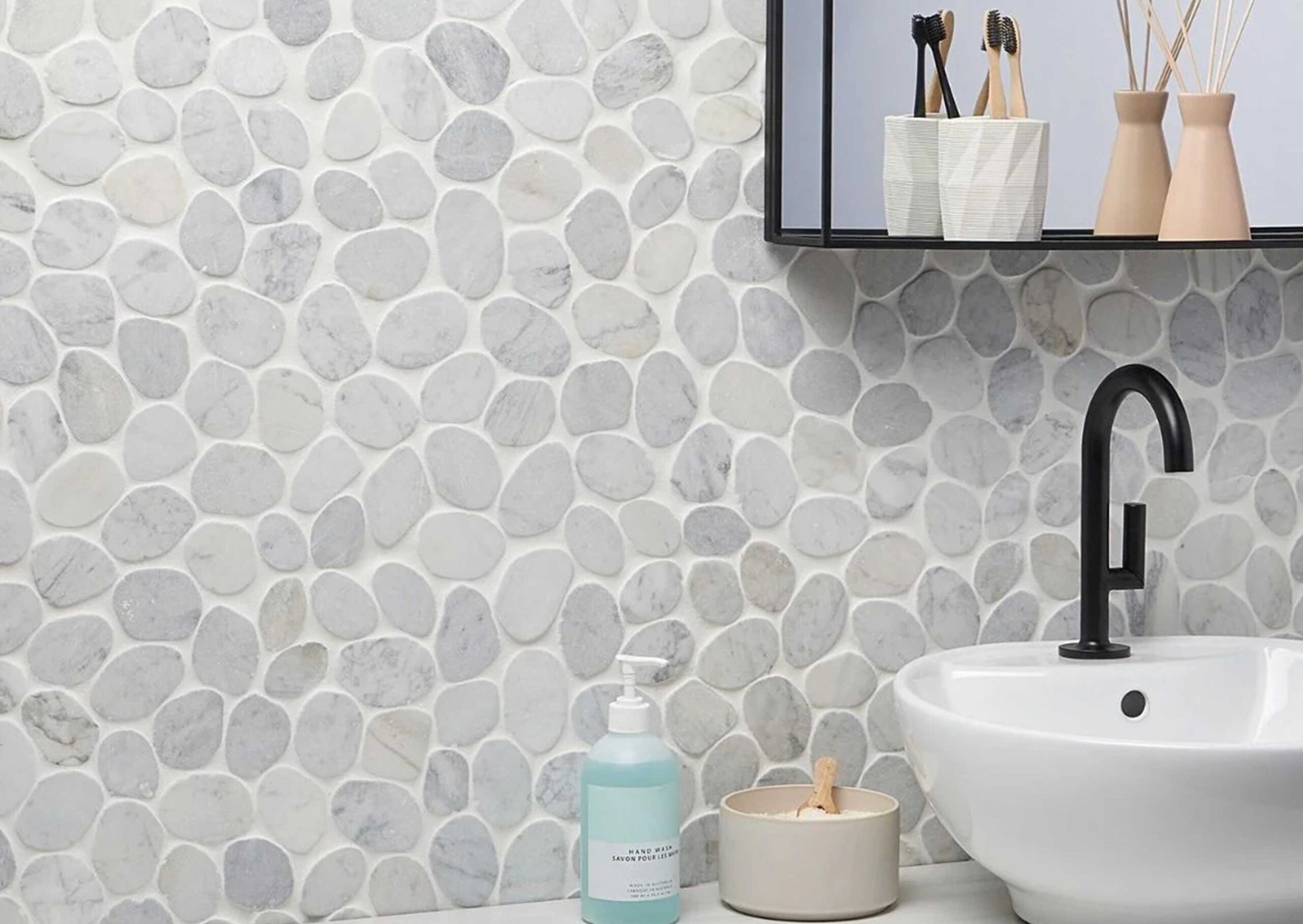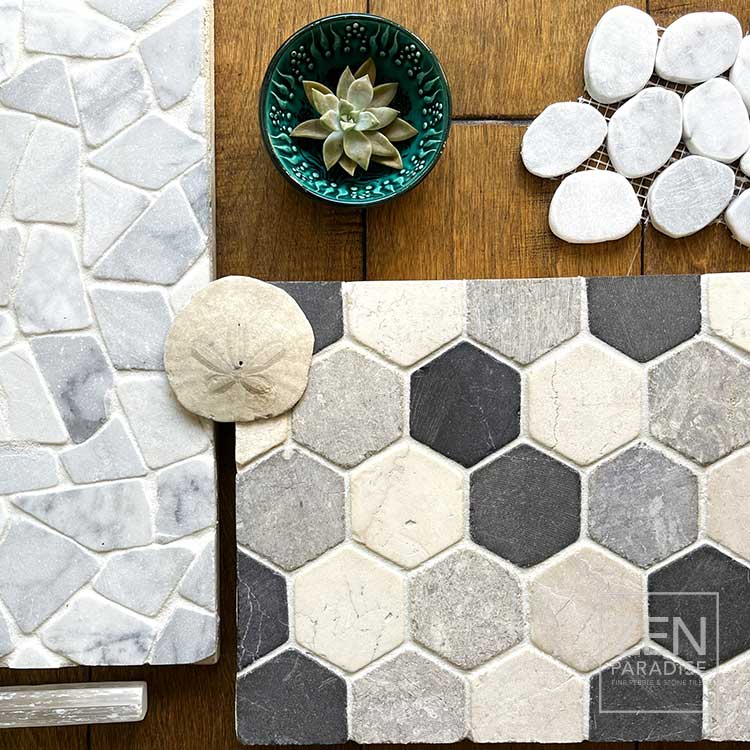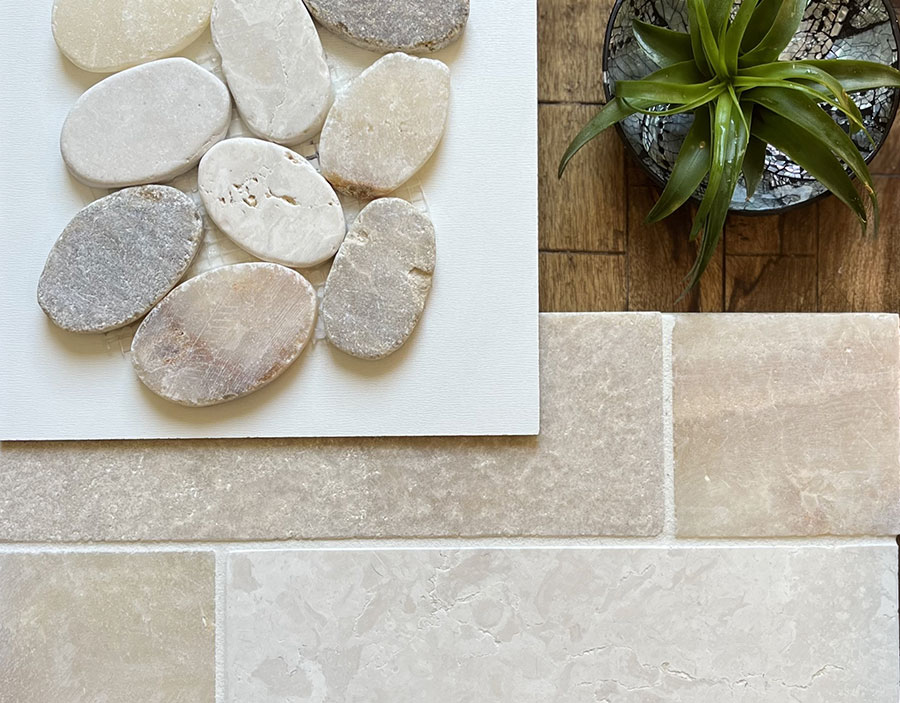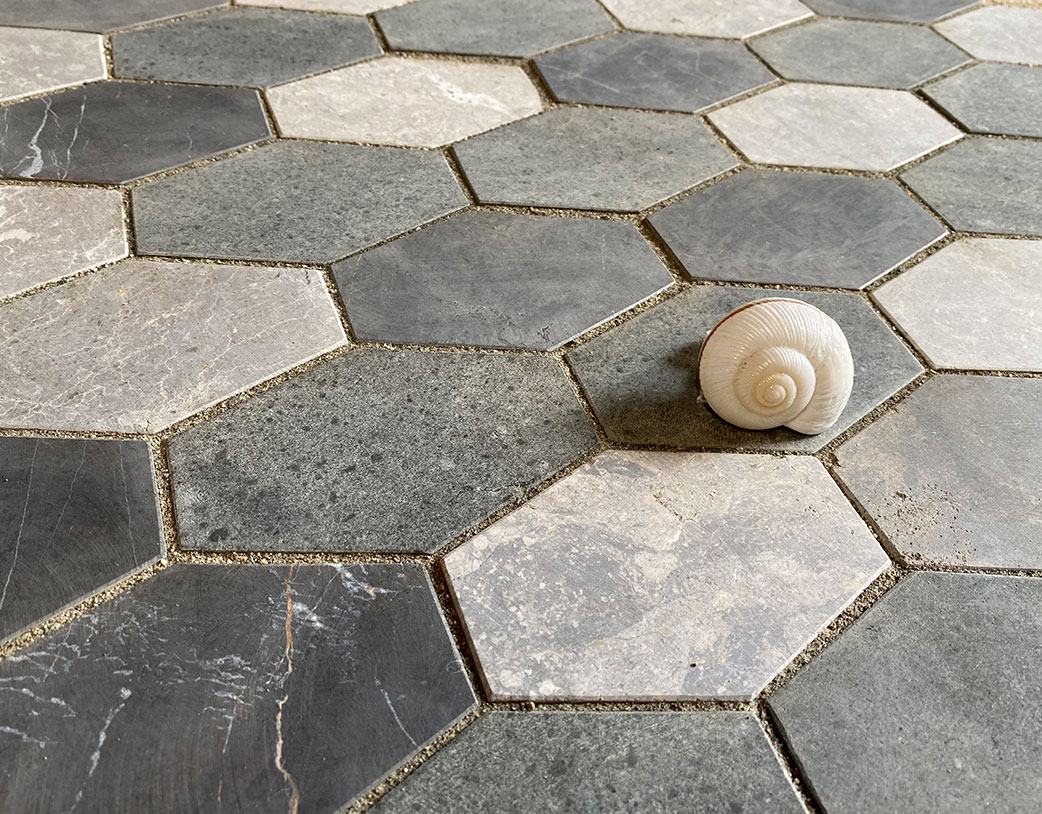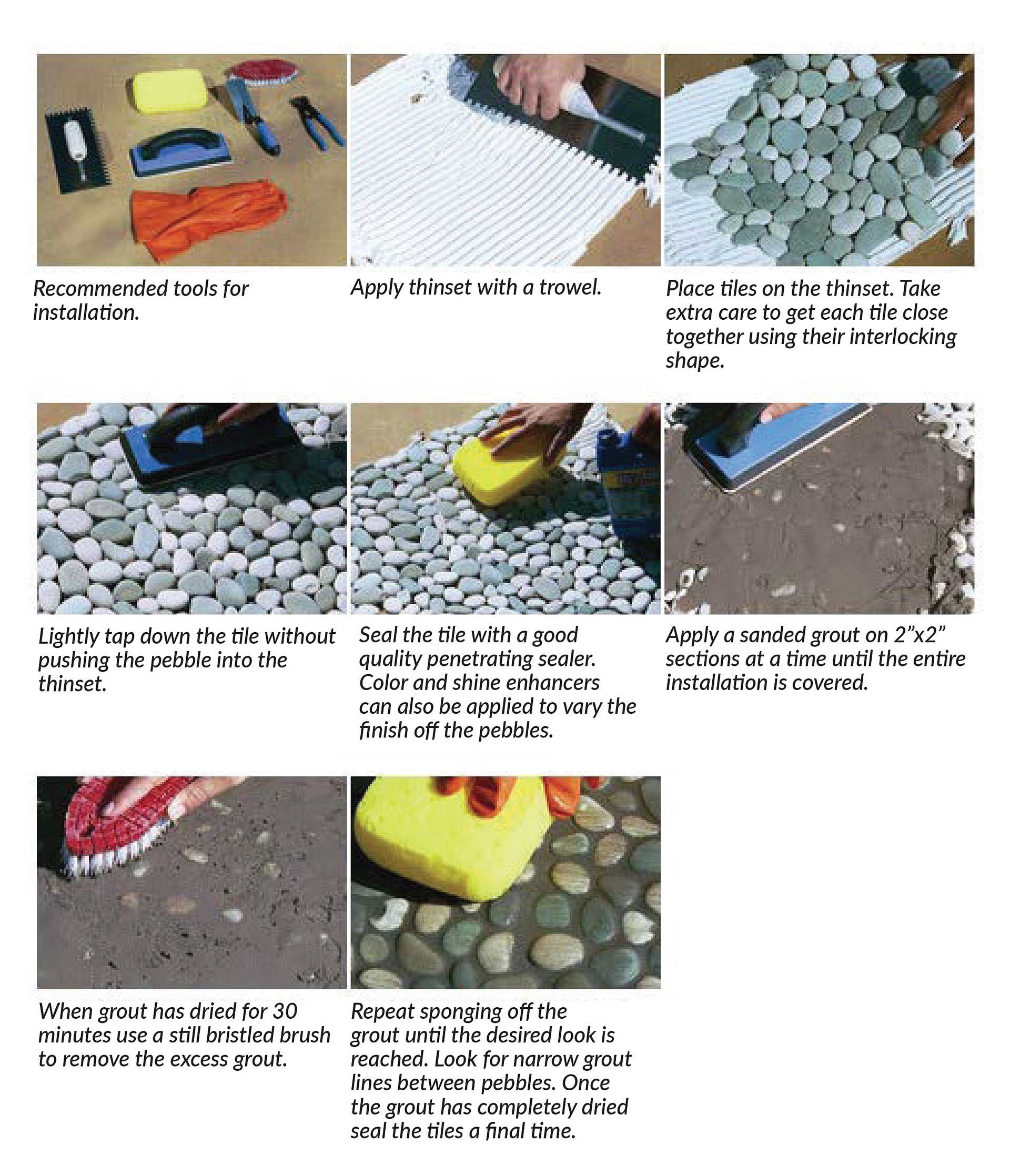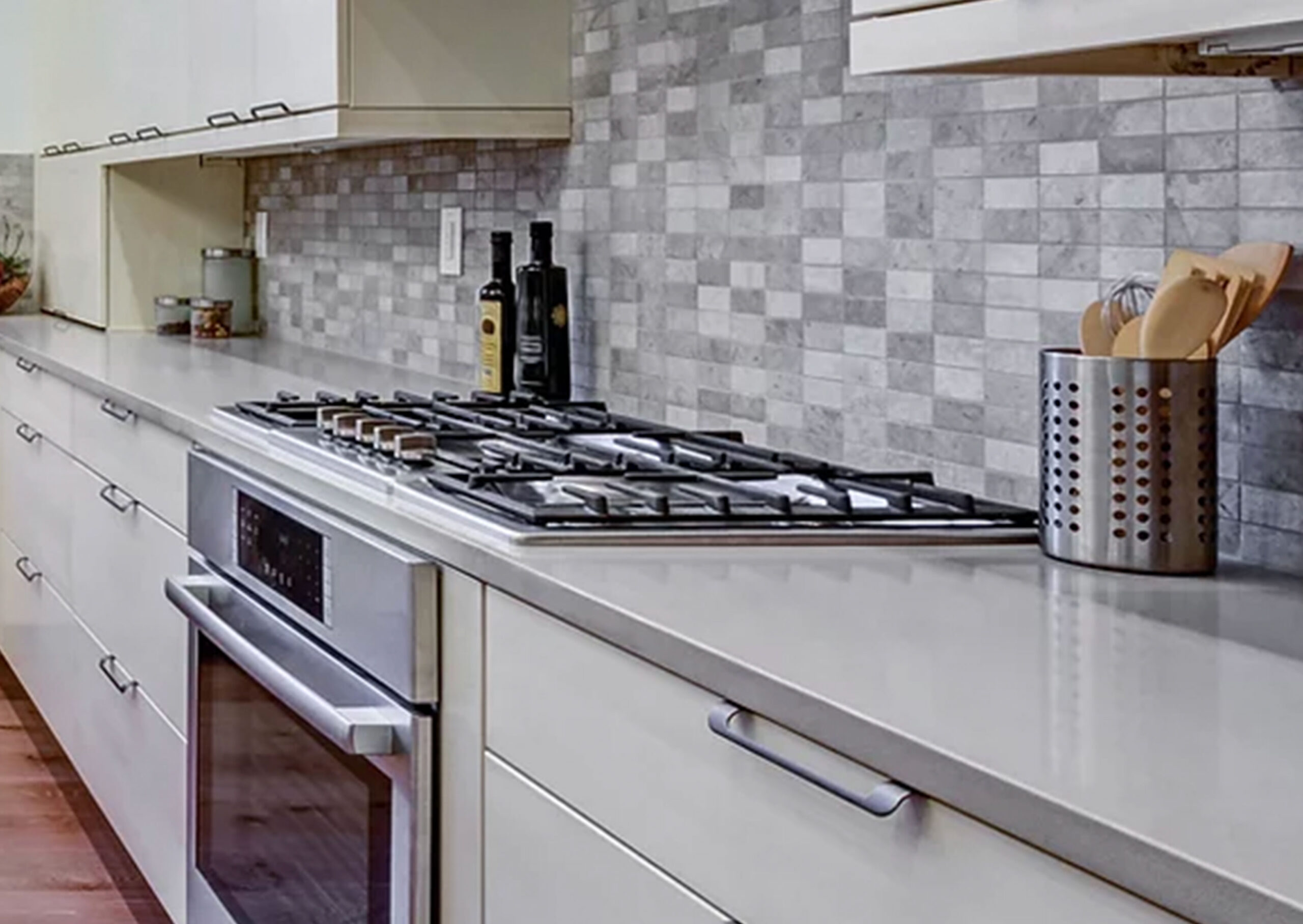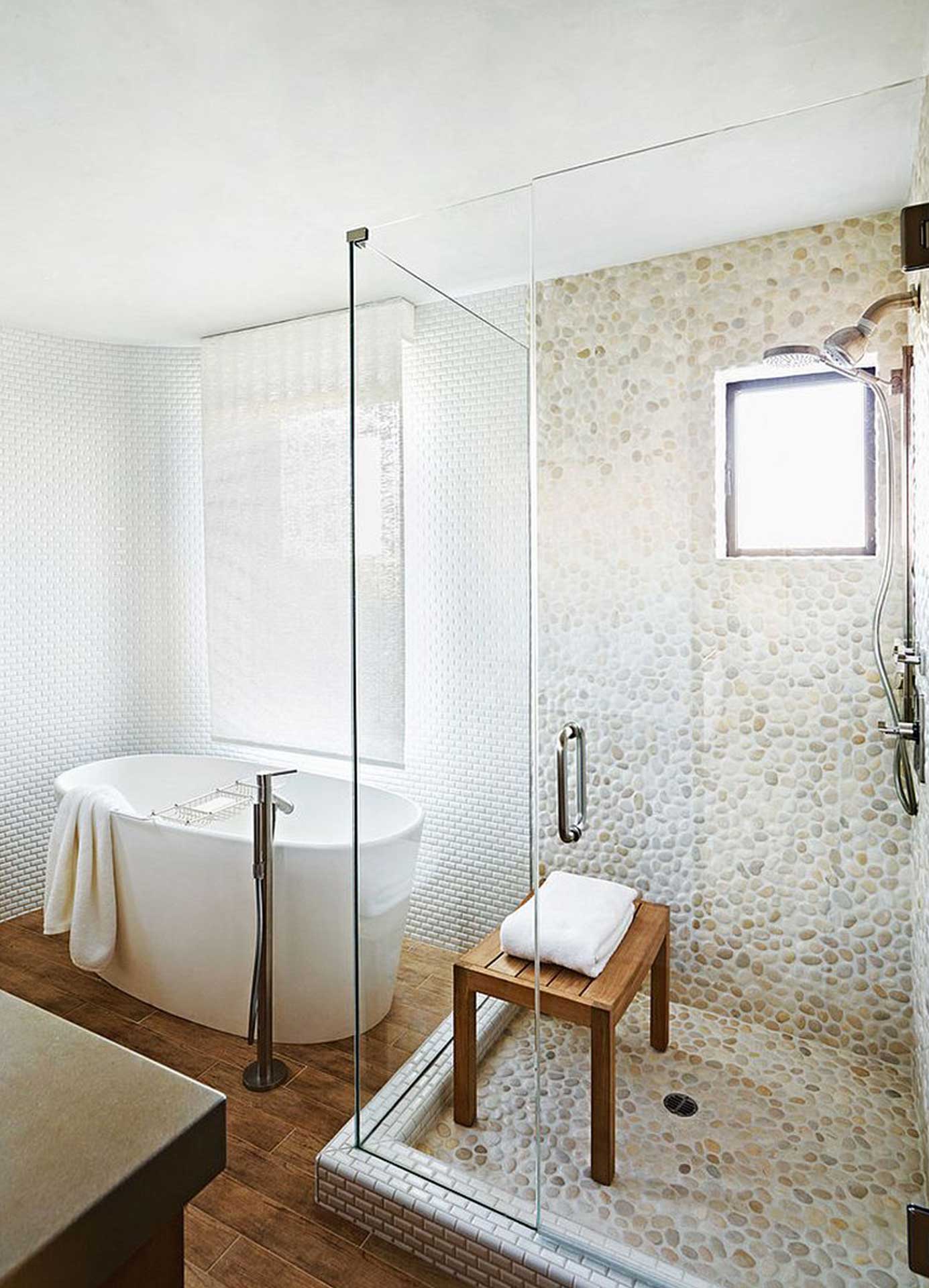INSTALLATION
TILE USES
They can be used in an extensive variety of installations. Zen Paradise natural stone mosaics are appropriate for both indoor and outdoor applications, Residential or Commercial. Commercial applications include flooring, feature walls, bar surfaces, patios, and walkways in projects ranging from restaurants, medical facilities, public parks, corporate offices, fountains, and patios. Residential installations include tile mosaics for pools and pool decks, patios, landscaping, fountains, water features, kitchen backsplashes, flooring, shower floors, bath and powder room floors, entryways, fireplaces, and BBQ areas.
DETAILED INSTRUCTIONS
Preparation and Application
Installation of Zen Paradise mosaic and pebble tiles is similar to any other natural stone product for best results; we recommend a qualified tradesperson who is experienced in the laying of natural stone products and specifically is familiar with laying natural stone mosaics and/or pebble tile. Most of our tiles are sold in approximately 12-inch by 12-inch sizes, and all tiles interlock on all sides. Sort tiles before installing to ensure an even color layout. For a vertical or contoured surface, a polymer-based adhesive with a short hydration period(i.e. glue setting time) should be considered. Substrates – The area of application should be flat, clean, dry, and free of contaminants. For wet areas, the use of reinforced waterproof membranes is suggested. In the case of flooring, a fall to the drainage point of no less than two inches is required.
Adhesive
Adhesive – Use only a high-quality thinset mortar. The thinset manufacturer’s literature will outline if it is appropriate for indoors or outdoors as well as for floors and walls. It is important that each mosaic shape or pebble is embedded in the adhesive. However, the mosaic or pebble tile should not be pressed too deeply into the adhesive as this will compromise the finish when you go to grout. Select a product suitable for application with a 1/4″ or 1/8″ notched trowel and apply no more than three square feet of adhesive at a time.
Sealing and Grouting
It is recommended that the mosaic or pebble tile be sealed before and after grouting. For the best results, use a good quality penetrating sealer. These types of penetrating sealers ordinarily do not change or alter the color of the natural stone or pebbles. In order to enhance the color of the stones to a deeper matte or glossy finish, it is suggested you use a natural stone color enhancer or natural stone color and shine enhancer prior to applying the penetrating sealer. A sanded grout that is suitable for external or internal conditions, whichever may be the case, is recommended. Generally, grouts are a water mix, but where some flexibility may be needed then a latex additive or similar should be used in the water. It is important to wait for the interval recommended by the adhesive manufacturer before grouting to minimize dirt ingress between the pebble and avoid the opportunity for dislodging of pebbles grout a small area at a time. When the grout has dried, the use of a stiff-bristled brush to scrub excess grout out of the joints will create a 50/50 relief. After removing most of the grout with a brush, use a grout sponge to continue removing the grout until the desired finish is achieved. Check out how grouting affects the finish color of the mosaic and pebble tile.
Control Joints
Joints can be easily formed with two angles, sealant, and bond-breaker between them; designers may show points at which joints are needed, and they are certainly required where tiles join walls or some other building material in the substrate a tile saw may be used to fit edges or corners you can also flip the tile over and cut the desired edge or shape with a sharp cutting instrument OR take individual pebbles off the pebble tile mesh to fill the gaps ordering extra sheets of pebble tile may be useful for this. Sealers and Cleaning It is recommended that the mosaic or pebble tile be sealed with a quality impregnator again after the grout has dried completely. To maintain ease of maintenance of natural stone, it is recommended that sealants be applied every 2-3 years. Whenever using sealants and cleaners, ensure you follow the manufacturer’s recommended method of application. The natural stone and pebble tiles can be cleaned with neutral mild detergents. The porosity or water absorption in pebbles (natural stone) varies, and therefore staining will occur in different degrees if the stone is unsealed. Consequently, any spills should be cleaned quickly to lessen the degree of the stain, and thus, sealers are highly recommended.
RECOMMENDED TOOLS
Recommended tools for installation:
- Apply thinset with a trowel.
- Place mosaic or pebble tiles on the thinset. Get tiles close together.
- Lightly tap down the pebble tile, making sure not to sink the tile.
- Seal the pebble tiles with a good quality penetrating sealer.
- Apply a sanded grout on 2′ x 2′ sections until covered. 30 min after the grout dries, remove excess grout.
- Sponge off the grout until the desired look is reached.
The pebble tiles and tile mosaics are a popular decorative finish due to their durability, texture, range of color, and many applications. They can be used indoors and outdoors on driveways, patios, steps, pathways, steps, swimming pools, showers, kitchens, flooring, fireplaces, and countless other residential and commercial applications. Installation is relatively easy and straightforward. Please take the time to refer to these instructions and have your contractor do the same.
QUICK GUIDE
BE INSPIRED
